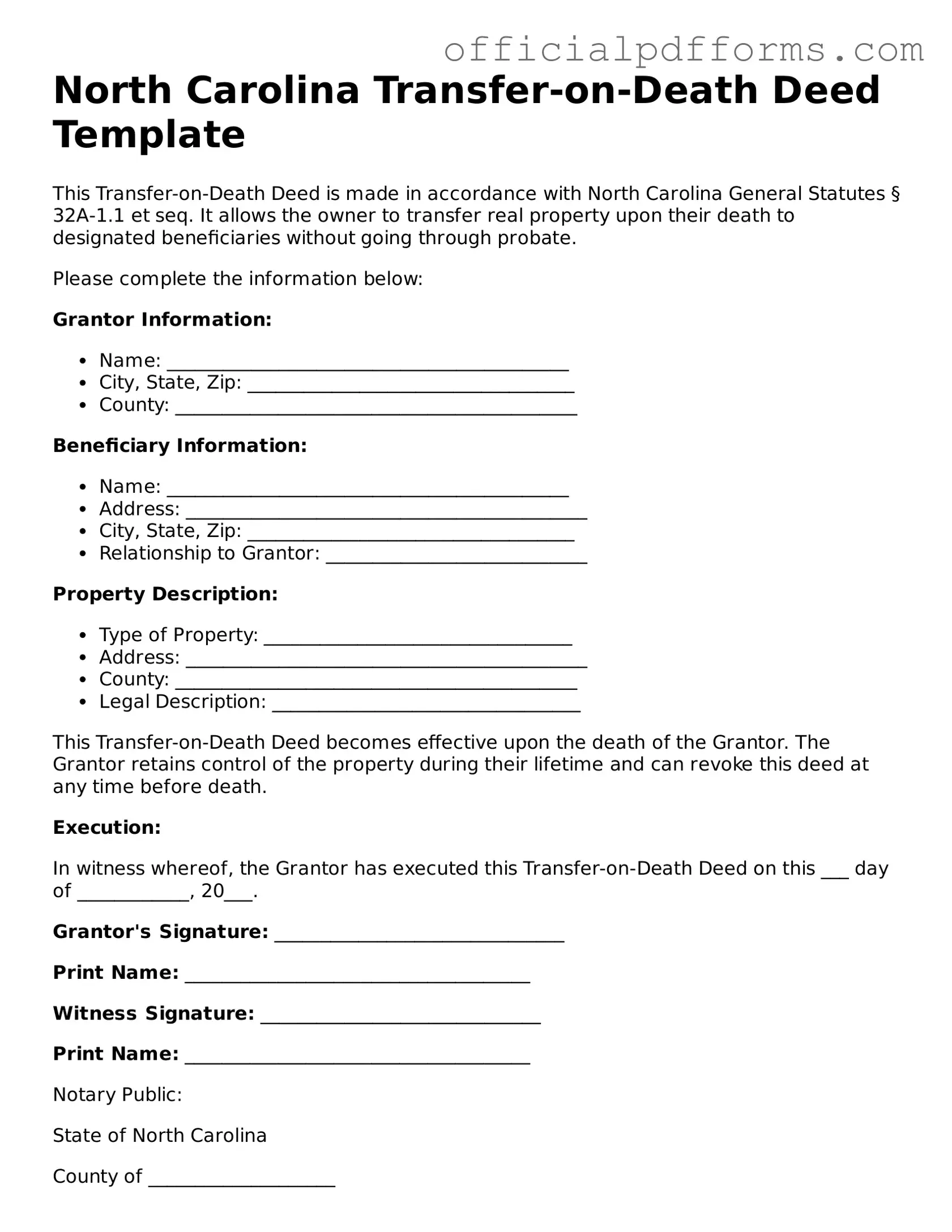What is a Transfer-on-Death Deed in North Carolina?
A Transfer-on-Death Deed (TOD Deed) allows property owners in North Carolina to transfer real estate to a designated beneficiary upon their death. This deed does not take effect until the owner's death, allowing the owner to retain full control of the property during their lifetime.
Who can use a Transfer-on-Death Deed?
Any individual who owns real estate in North Carolina can use a TOD Deed. This includes homeowners, landowners, and individuals holding property in their name. However, it cannot be used by entities like corporations or partnerships.
How does a Transfer-on-Death Deed work?
The property owner completes the TOD Deed form, naming one or more beneficiaries. The deed must be signed, notarized, and recorded with the county register of deeds. Upon the owner’s death, the property automatically transfers to the designated beneficiary without going through probate.
What are the benefits of using a Transfer-on-Death Deed?
-
Allows for easy transfer of property without probate.
-
Retains full control of the property during the owner's lifetime.
-
Can be revoked or changed at any time before the owner's death.
-
Offers a straightforward way to pass property to heirs.
Are there any limitations to a Transfer-on-Death Deed?
Yes, there are some limitations. A TOD Deed cannot be used for property held in a trust, for properties subject to a mortgage that prohibits transfers, or for properties owned jointly with rights of survivorship. Additionally, the deed must comply with North Carolina laws regarding execution and recording.
Can a Transfer-on-Death Deed be revoked?
Yes, a Transfer-on-Death Deed can be revoked by the property owner at any time before their death. This can be done by recording a new deed that explicitly states the revocation or by executing a new TOD Deed that names different beneficiaries.
What happens if the beneficiary predeceases the owner?
If the designated beneficiary dies before the property owner, the TOD Deed will not transfer the property to that beneficiary. The owner should consider naming an alternate beneficiary to ensure the property still transfers as intended.
Is there a fee to record a Transfer-on-Death Deed?
Yes, there is a recording fee that varies by county in North Carolina. It is important to check with the local register of deeds for the exact amount. Recording the deed is essential for it to be legally effective.
Do I need an attorney to create a Transfer-on-Death Deed?
While it is not legally required to have an attorney to create a TOD Deed, consulting with one is advisable. An attorney can provide guidance to ensure the deed is properly executed and complies with all state laws.
Transfer-on-Death Deed forms can be obtained online from various legal websites or through the North Carolina Secretary of State’s website. Local county offices may also provide forms and additional information regarding the process.
